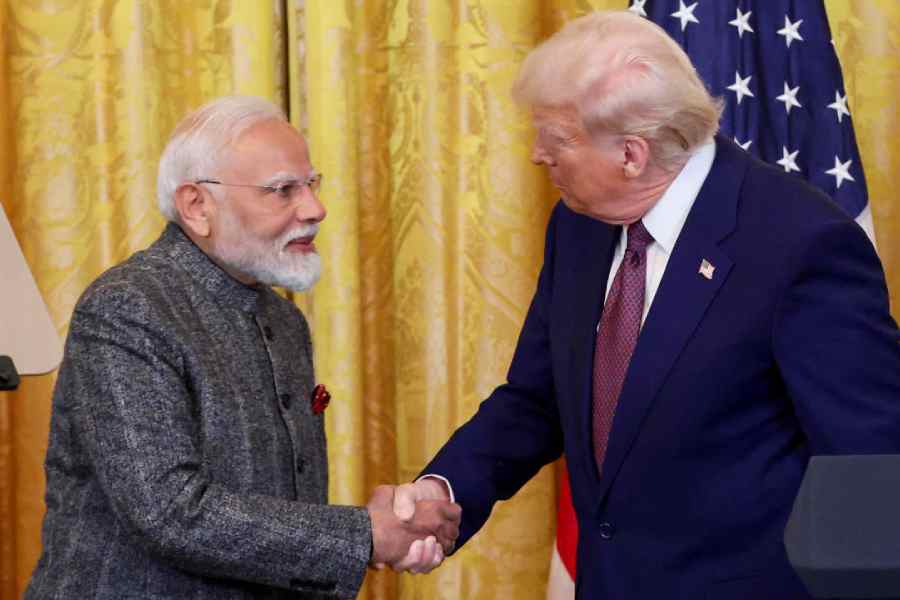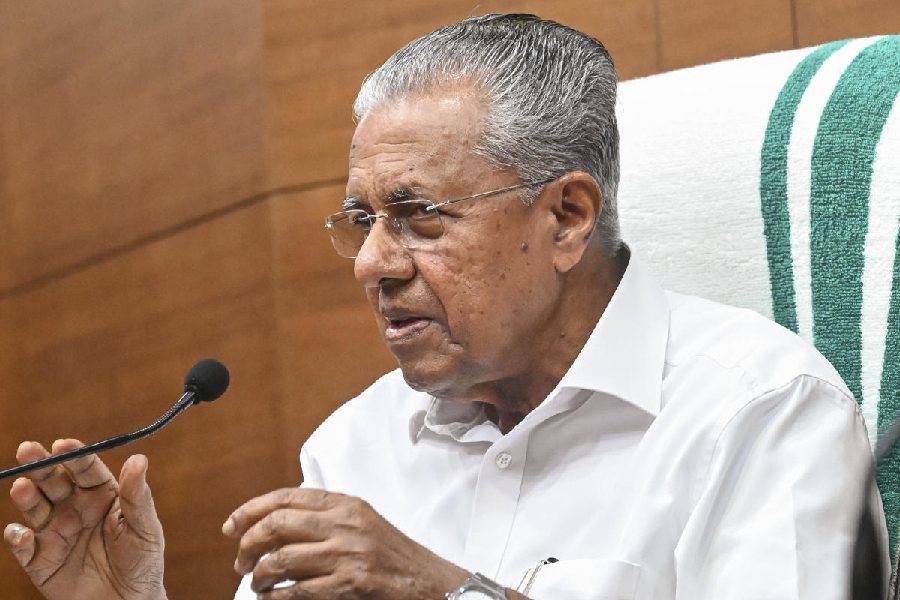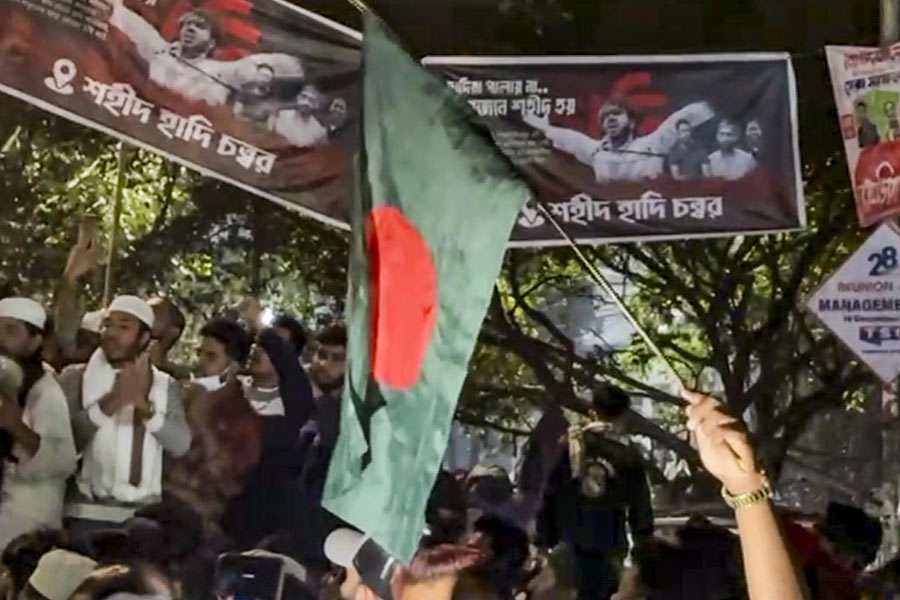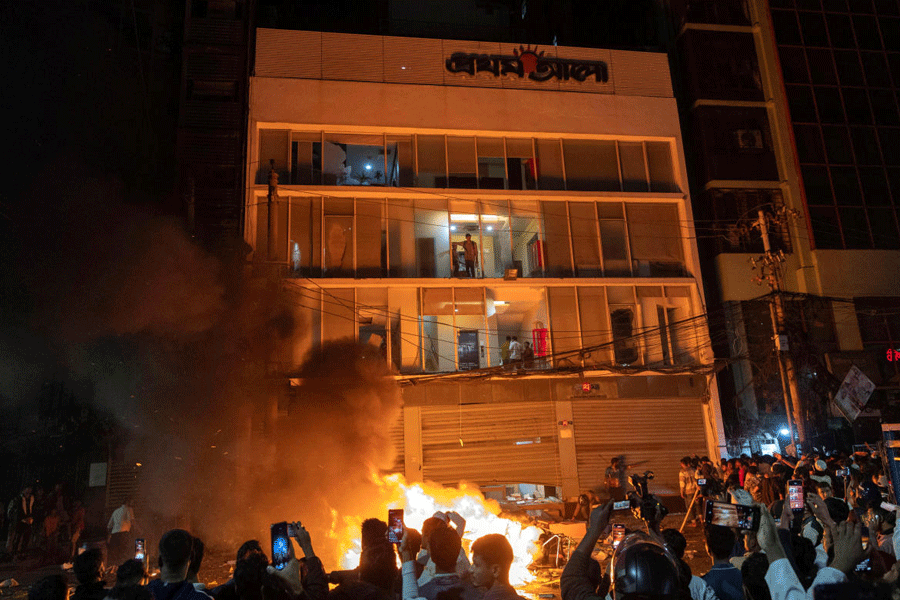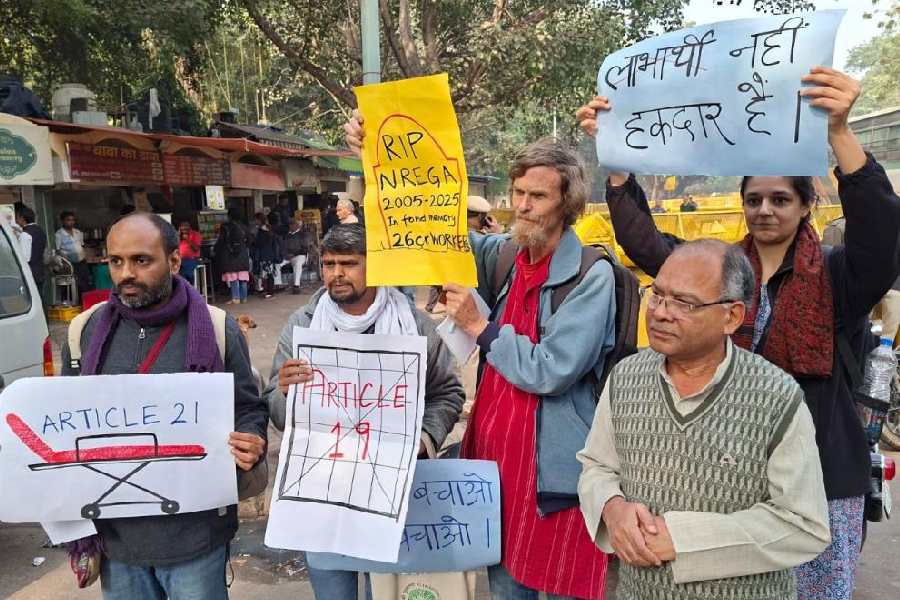Bluster has blown away the bonhomie of the past.
President Donald Trump has threatened to hit India with a slew of retaliatory tariffs by April 1 and demanded greater market access for American goods and services and a quick-fire mini-trade agreement by October to resolve issues that have tilted the trade balance against the US.
Prime Minister Narendra Modi and his team of negotiators were pushed on the back foot, scrambling later to claim there were some good outcomes from the first meeting between the two leaders since 2020.
India’s negotiators found themselves out of aces, appearing to buckle in the face of dire threats from a rampant Trump who once again spoke forcefully about his desire to wrest a level playing field for American goods and services.
Trump had set the tone for the meeting by deliberately announcing hours before his talks with Modi that the US would impose reciprocal tariffs against all nations that use tariff and non-tariff barriers to stem the flow of US goods and services.
The US President was blunt. “India is a very hard place to do business because of the tariffs. They have just about the highest tariffs in the world,” he said at a news conference after the talks, with Modi standing by his side.
“India imposes a 30, 40, 60 and even 70 per cent tariff on so many goods and, in some cases, far more than that…. Today, the US trade deficit with India stands at nearly $100 billion, and Prime Minister Modi and I have agreed to negotiate to address these longstanding disparities,” Trump said.
The rhetoric was not new but the tone was sharper and the threats more pronounced. However, Trump’s deficit figure seemed overblown.
Data from the office of the US Trade Representative put the US goods trade deficit with India at $45.7 billion in 2024, “a 5.4 per cent increase ($2.4 billion) over 2023”.
Trump was probably including the deficit figure in services but even that would not swell the overall volume to $100 billion.
This isn’t the first time that Trump has resorted to shock-and-awe tactics to subdue India with trade threats.
In 2019, he had announced a decision to terminate the duty-free imports of 1,784 items from India to the US under the Generalised System of Preferences, which threatened to affect Indian exports worth $5.6 billion.
Modi adopted an accommodative approach in the recent budget by slashing import duties on a raft of goods, including Harley-Davidson motorcycles and Tesla cars. But this appears not to have mollified Trump, who clearly wants much more.
Trade deal
Just hours after Washington threatened to slap reciprocal tariffs on trading partners including India, both sides rushed to the negotiating table.
Foreign secretary Vikram Misri confirmed that talks were under way for a trade deal “by Fall 2025” — coinciding with the Quad summit during which Trump is set to visit India.
Misri said: “The two leaders agreed to negotiate the first tranche of a multi-sector bilateral trade agreement by Fall 2025.”
The agenda is broad: market access, tariff reductions, and deeper supply chain integration.
This marks the first definitive timeline for a bilateral agreement after past negotiations collapsed during Trump’s first term. The stakes are higher than ever.
“As we deepen our defence partnership, we will also strengthen economic ties and bring greater fairness and reciprocity to our trading relationship,” Trump said, a comment experts believe meant that India must make trade concessions or face punitive measures.
In a sharp rebuke to the previous Joe Biden administration, Trump declared: “We’ll be getting negotiations to address long-running disparities that should have been taken care of over the last four years.”
Trump’s strategy is clear: tariff pressure, transactional diplomacy, and the relentless pursuit of a better deal for America.
Experts, however, have warned that Trump’s “America First” approach is devoid of long-term strategic thinking. His aggressive playbook -- using tariffs as leverage -- forces trade partners into rushed agreements that primarily serve US interests.
Ajay Srivastava, founder of the Global Trade Research Initiative, observed: “The US has not clarified whether reciprocal tariffs apply to specific products or entire sectors. This creates uncertainty and puts India in a vulnerable position.”
Trade policy expert Abhijit Das warned that these measures would “shred the WTO rulebook”.
He wondered how the US would quantify and enforce the reciprocal tariffs. “Will it be based on customs duties alone, or will it factor in exchange rates, non-tariff barriers, and subsidies? The ambiguity is concerning,” Das said.
Biswajit Dhar, another trade expert, cautioned that Washington could use reciprocal tariffs to pressure India into reducing duties on agriculture, an area in which the US has an overwhelming interest.
New Delhi has taken a measured approach so far, making selective tariff cuts while exploring ways to protect key domestic industries. A limited preferential trade agreement could provide temporary relief, but the broader challenge remains: how to engage with an unpredictable and aggressive Trump administration without losing economic leverage.
Ram Singh of the Indian Institute of Foreign Trade framed the situation bluntly: “Trump’s reciprocal tariffs signify a lose-lose game, but he uses them to force countries to the negotiating table. His disruptive style means India must tread carefully, mobilise global institutions, and remind the US that its strategic partnership with India is not a blank cheque.”

